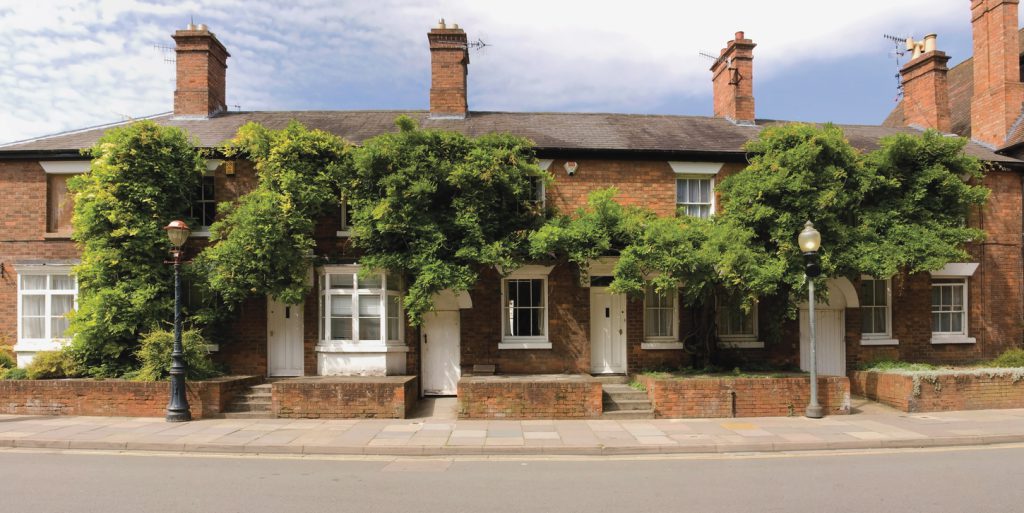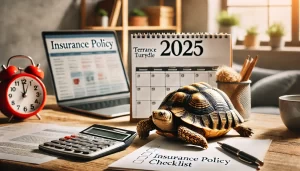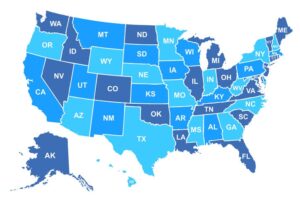What to Know about Private Residence Relief: Your Introduction

Private residence relief is a form of tax relief that lets most UK taxpayers sell their homes without paying capital gains tax on the profits.
While it’s mostly aimed at people selling their primary residence, few people know it can also help second homeowners, landlords or even when you’re just selling off part of your garden.
In this guide, we explain everything you need to know about Private Residence Relief. From what it is to how it’s calculated and how to claim it, we’ll help you understand your options when selling your home.
Let’s get started.
What is Private Residence Relief?
If you sell a UK residential property that isn’t your main home, you normally have to pay Capital Gains Tax (CGT) on any profits from the sale. This applies even if you’re just selling a part of the property (such as an annexe) or a section of the garden.
For anyone that’s owned their home for a long time (or made large-scale renovations), taxes when selling a house can be costly.
But, if you meet certain conditions (which we’ll cover below), you might get Private Residence Relief (PRR). This means you don’t have to pay capital gains tax at all.
Are you entitled to claim Private Residence Relief?
You’re entitled to full Private Residence Relief if you meet all the following conditions:
The dwelling house (i.e., a place someone lives) has been your main or only residence (sometimes also called your “principal private residence”) for the time you’ve owned it.You haven’t been absent from the property (other than for allowed periods or living in job-related housing) during the time you’ve owned it.The garden, grounds and buildings aren’t greater than the “permitted area” (of 5,000 square metres, equivalent to just over 1.2 acres). HMRC might extend this limit in “exceptional circumstances”, for instance, when a larger area is deemed in-keeping or necessary for the “character of the property” or “reasonable enjoyment of the property”.You haven’t used any part of your home (or the whole property) exclusively for business purposes, i.e., as a commercial property such as a shop. Working from a home office is fine though, if it’s also used for non-business purposes.You didn’t purchase the property solely as an investment.
If you meet all these conditions, you’re entitled to full relief and don’t owe any Capital Gains Tax on profits from selling your home.
For people with just one home as their principal residence, the process is pretty simple. In fact, Private Residence Relief is awarded automatically, so you don’t normally have to complete extra sections on your tax return.
Note: This only applies if you haven’t made any other chargeable gains or disposals, and don’t want to make any capital gains claims. If you’re unsure about your income tax obligations, seek independent financial advice.
Can I get partial Private Residence Relief?
If you only meet some of the conditions above (for instance, the property was your only residence for most of the time you owned it, but you later rented it out), you might still be eligible for partial relief.
Before we explain how this works, it’s important to note you won’t get any Private Residence Relief if:
You sell all or part of the garden after you’ve sold your home.You buy the property (or “dwelling house”) to make financial gains. For instance, if you’re a property developer who buys a house, renovates it quickly and sells it straight away — this counts as an investment.Your grounds are farmland of any kind.
Partial Private Residence Relief: An Example Calculation
Here’s how it could work in practice.
Say you bought your home for £200,000 in January 2011. You then sold it for £350,000 in January 2021. This is a taxable gain (or profit) of £150,000.You only lived in the property for one year after buying it, and then bought a second home which became your main residence.This means you had 120 months of ownership and lived in the original property for 12 months.You receive Private Residence Relief for the period the property was your main home, plus the final 9 months you owned the property, no matter what it was used for. So, your PRR period of occupation (9 plus 12) is 21 months.
A standard calculation is:
Total (£) Profit x (Period of Occupation ÷ Period of Ownership)
Applying this to the case above:
£150,000 x (21 ÷ 120) = £26,250
This means you’re entitled to Private Residence Relief on £26,250 of the property profits.
Note: Your “period of ownership” starts on the date you first bought your home (or 31 March if that’s later). It ends when you sell it (i.e. when contracts and completion have taken place, known as the “date of disposal”). The final 9 months (or 18 months if you sold your home before 6 April 2020) of this period always qualify for relief, regardless of how you’re using the property. This is known as the “final period exemption” and only applies if the home was your main or only residence at some point.
You can find detailed advice on legislation and examples of how to calculate Private Residence Relief (for instance, if you’ve lived elsewhere or your land exceeds the permitted area) in the Private Residence Relief HMRC guidance.
Who can claim Private Residence Relief?
If you think you’re entitled to full or partial residence relief, a few extra criteria apply.
To claim Private Residence Relief, the person selling the property has to be a UK resident during that tax year. You’re entitled to relief whether you own the freehold for your home or leasehold. This also applies whether you own the freehold or leasehold outright, or jointly shared with another person.
There are special rules for married couples and civil partners (who aren’t separated). In this instance, the civil partnership couple (or husbands and wives) are one entity. They can only designate one property at a time as their private residence.
It’s also possible for “trustees of settled property” and “personal representatives” to claim Private Residence Relief. You might also be able to claim if you’re selling the property of a dependent relative.
Can I claim Private Residence Relief if I’ve made a loss on my property?
In short, no.
Private residence relief doesn’t apply if you’ve made a loss on the sale of a private residence.
Why?
It’s pretty simple really. Capital gains tax applies to profits from a sale. So if you’ve made a loss (and don’t have any taxable gains), you won’t owe capital gains tax.
This means Private Residence Relief doesn’t apply — and wouldn’t be required anyway.
What is Letting Relief?
If you only get partial Private Residence Relief because you’ve taken on lodgers, further relief could be available.
This is called “letting relief” and applies when:
You sell a “dwelling house” that’s been your main or only residence.During the time you owned your home, you let part of it as residential accommodation. This must have been at the same time you used the rest of your home as your main residence.
Letting relief doesn’t apply if you rent your entire home for any period of time, for instance, as a buy-to-let property.
The amount of letting relief you can get will be the lowest of three things:
The amount of Private Residence Relief you’ve already calculated.The chargeable gains you’ve made because of the letting.£40,000
So if you’re eligible, you can receive up to £40,000 in Letting Relief.
Can I claim both Letting Relief and Private Residence Relief?
It might be possible to claim both Letting Relief and Private Residence Relief, but only under certain circumstances.
If you only rented out part of a dwelling house, you’ll need to figure out what proportion of your property you lived in. This is because you’ll only get Private Residence Relief on this part of the property sale.
Here’s another example:
You rented out one bedroom to a tenant. From looking at the floorplan of your home, you calculate this room amounts to 20% of the main building.When you sold your home, you made a chargeable gain (i.e., a profit) of £60,000.As you rented out 20% of your home, you’ll only get Private Residence Relief on 80% of the total gain.You can also claim Letting Relief on 20% of the remaining gain.
In practice, claiming both Letting Relief and Principal Private Residence Relief means you aren’t liable for any Capital Gains Tax.
Remember, only an owner who shares occupancy with their tenants (i.e., living in the property at the same time) is eligible for Letting Relief. If you lived somewhere else while renting part (or the whole) of your home, this relief won’t apply.



